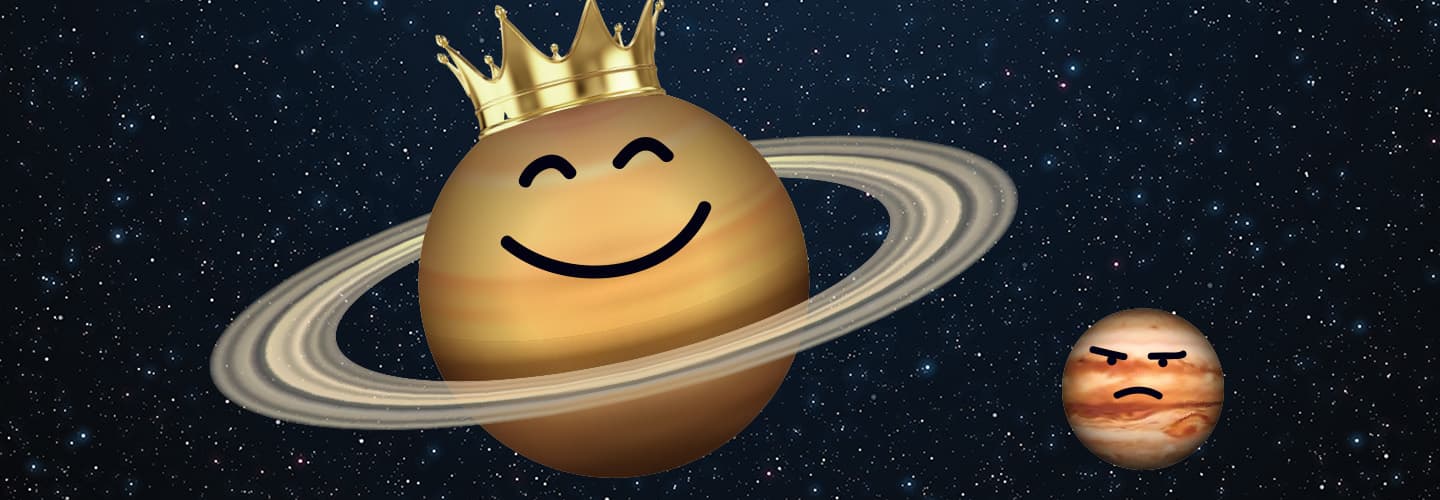Which planet has the most moons? The answer has changed twice already this year. In February, astronomers announced the discovery of 12 new moons orbiting, or revolving around, Jupiter. With 95 moons, the giant planet moved ahead of Saturn to be crowned our solar system’s moon king.
But the record didn’t last long. In May, astronomers revealed that they had found an additional 62 moons circling Saturn. That put the ringed planet back on top, with 146 moons.
Two groups of astronomers made the discovery. Each team used images of Saturn taken by separate giant telescopes on a mountaintop in Hawaii. Then they layered several images on top of one another to make the “hidden” moons visible.
Saturn’s newly discovered moons are much different than Earth’s moon. For one thing, they’re about 1,000 times smaller. Each is only a few miles wide. Also, they aren’t round.
“They likely have an elongated shape, sort of like a potato,” explains Edward Ashton. He led one of the teams that identified Saturn’s new moons.
The new moons are also younger than Earth’s moon—but they’re still billions of years old. Ashton and other scientists believe the small moons are pieces of larger ones that crashed into each other.
As the hunt for moons around Saturn continues, Ashton is sure the number will grow.
“I can say with 100 percent certainty that more moons will be discovered,” he says.

